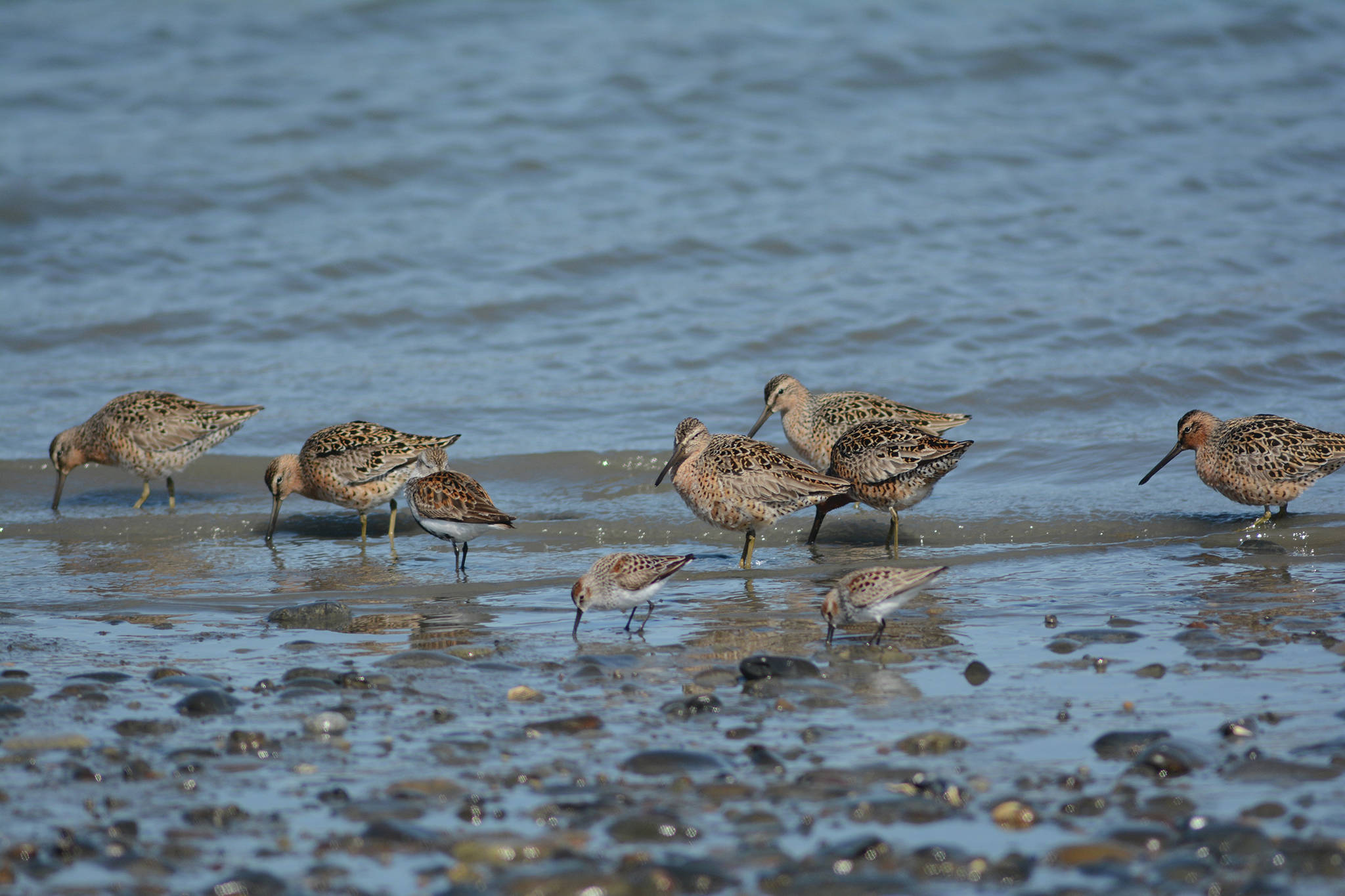Scattered on my desk I have three journals: my bullet journal, the daily planner that sort of keeps my life in order; my bird journal and — new for this year — my pandemic journal. That conglomeration reminds me of a lesson learned in these days of COVID-19. Despite a chaotic year, the world in one respect remains constant.
Birds.
In my pandemic journal I started my accounting March 8, the day my wife and I decided to cancel a spring trip to France. In a rare example of journalistic prescience — I am, after all, also a science fiction writer — France canceled all foreign travel at the end of March. Another marker came March 19, when the Kachemak Bay Shorebird Committee, of which I am a member, decided not to hold its annual Kachemak Bay Shorebird Festival, scheduled for May 7 to 10. In the midst of travel restrictions, hunker-down orders and strict social distancing, it seemed prudent not to invite keynote speakers and a few thousand birders to Homer for the Mother’s Day weekend.
No one told the birds that.
The shorebird festival proved to be but one of many events and festivals not held in the spring and summer of 2020. Pier One Theatre season? Pfft. Homer Chamber of Commerce and Visitor Center Winter King Tournament? See ya next year. The Kachemak Nordic Ski Club Marathon. Nope — but thanks for that awesome trail. Libraries and museums closed. The Homer News office shut down and I retreated for eight weeks to my Fortress of Solitude on Diamond Ridge. All the markers I’d looked forward to as winter morphed into spring vanished.
Except the birds.
I’m really not the best journalist when it comes to noting birds. I start my bird year in spring, almost always with an entry for the first telephone trill of the varied thrush (“heard March 20”). As each sound echoes on the ridge or I spot birds flying overhead, I note them: snipe, robin, cackling Canada goose, greater yellowlegs. When the shorebird guide comes out, I clip out the cover and paste it in my journal along with the shorebird checkoff list. This year we had the guide without the festival. As the season wears on I forget to note new songs or sightings. I’m pretty sure I’ve heard the olive-sided flycatcher but forgot to enter it.
When the shorebird festival rolled around, even though there were no official events, I attended it anyway. I clipped the shorebird monitoring session listings with time and tides and pasted them in my journal. I wasn’t the only one to do so. On the daily changing tides, I found other birders at Mud Bay or on the Spit, binoculars around their necks and spotting scopes set on the side of the Spit Trail, searching for peeps.
We didn’t have the hundreds of birders lining the bike path, which probably was just as well. Birding lends itself to social distancing but it can get crowded during the festival. One of the joys of the festival is discovering other people who share your passion, or in my case, exceed it. “What do you see?” is the common icebreaker. Don’t know a bird? At the migration you can find experts who know way, way more.
Still, enough birders gathered, mostly safe. We might have shouted from 6 feet away, or might have moved close with neck gaiters over our faces, but we had our days of togetherness. I missed that burst of 65 red knots and another sudden visit of as many whimbrels. I did see a possible bristle-thighed curlew, a new sighting for me.
Late in the afternoon May 2, on the weekend before the official festival, as the tide went out at Mud Bay, I followed it over to Green Timbers on the Spit. I hiked across the post-earthquake Spit, the part never filled in and left collapsed into mud and wetlands, to the beach.
The sun glowed golden, casting that beautiful late spring and summer light you only get in the higher latitudes. The tide just licked at the edges of the mud where shorebirds feed as the water pushes critters to the surface. The trick of birding is to let your eyes see, to flip them from looking at the business of civilization to watching feathers, feet and beaks. It’s a calming, a meditation, a letting go of that which clutters our mind and sight.
There is a point where there will be no birds and then suddenly the birds burst into sight, except they have been there all along. I had that moment on the beach. A group of dunlins, dowitchers, Western sandpipers, black bellied plovers and semipalmated plovers snapped into view. I had my camera and a 300 mm long lens. All seeing should not be through a camera, so I alternated taking photos, looking through my binoculars and spotting scope, and taking photos.
One other birder scanned about 500 yards away. I moved cautiously toward him. We shared notes, talked cameras and birds, and let each other have his space. On that beach I thought of spring days sitting in a cafe in Paris, and how much I missed that — but un petite peu, just a little bit.
On a beach in early May with the birds and the golden light, that was enough, and the trauma of the pandemic slipped away.

